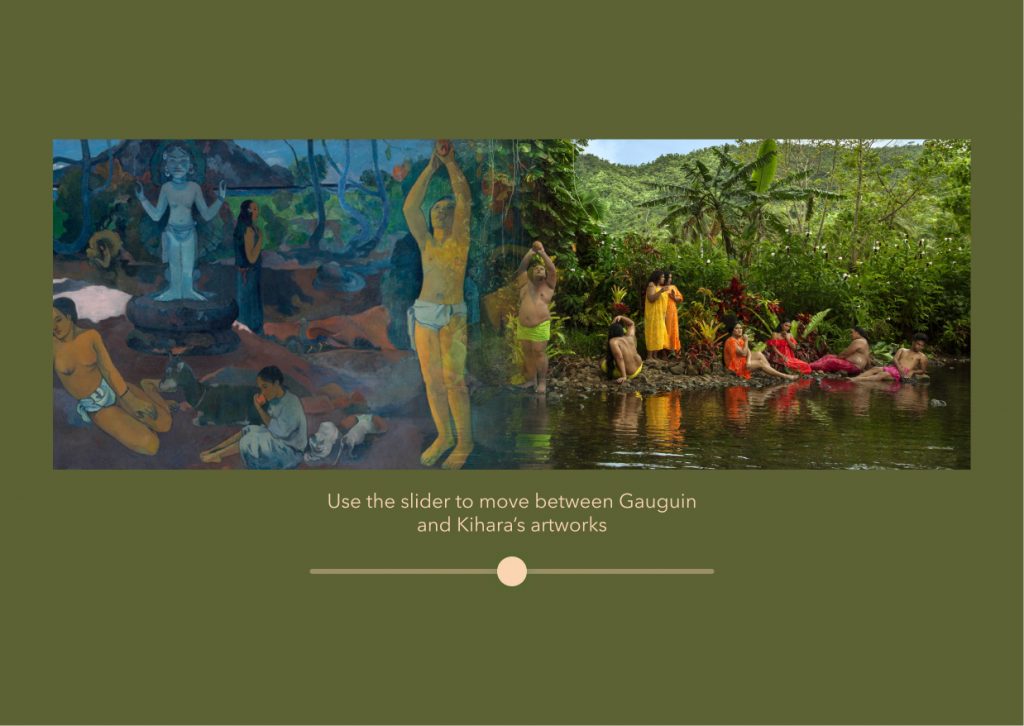The work of Sāmoan-Japanese artist Yuki Kihara reclaims the work of Paul Gauguin’s from a Fa’afafine (Sāmoa’s ʻthird gender’) perspective. In 2021, Kihara became the second New Zealander of Pacific descent to be invited to global Biennales.
Travel restrictions due to the pandemic meant that attendees from Aotearoa and across the globe would not have access to the international exhibition.
Therefore, our challenge question for this project was: How might we turn travel restrictions into an opportunity for making the arts more accessible?
Our answer was to collaborate with the Arts Council of New Zealand toi Aotearoa and Yuki Kihara to create an AI-supported virtual experience that opened access to the exhibition from anywhere.
The outcomes
10,000+
IRL visitors to the exhibition during the first 4 days
14,000+
Virtual visitors to the exhibition
77,000+
Page views for the web experience
168
Countries virtually attended the exhibition
A digital gallery experience for those at home
At-home audiences accessed the exhibition via the web experience, named Virtual Explore, which mimiced the exhibition gallery in Venice. Users could engage with each image and were consequently immersed in an identical experience to in-gallery attendees.


Creating a digital art concierge
Virtual Explore further allowed audiences to watch and hear Kihara speaking to her research and creation process, and Paradise Camp themes and stories.
We also created an Art Comparison feature which allowed users to compare Kihara’s art with Gauguin’s, thereby cementing the reimiganiation and reclaimation of the colonial artwork.
“This was truly a unique project in concept and execution. It required teamwork, persistence, and a belief in what we were aiming to achieve in this challenging international context. We are proud of the results achieved – an expansive exhibition which attracted attention from international media and arts professionals.”
Caren Rangi, Commissioner, NZ at Venice Chair, Arts Council of New Zealand Toi Aotearoa

Other projects
- Empowering Conservation StorytellersEquiping WWF Australia’s content creators with intuitive tools.
- Keeping the Organic EdgeEnsuring that Levande goes through a modern replaftorm of the digital experience platform while retaining all their years of organic traffic
- Refreshing Geoscape’s Digital PresenceDesigning a new web experience for Geoscape Australia that enhances their market positioning in the geospatial intelligence sector.







